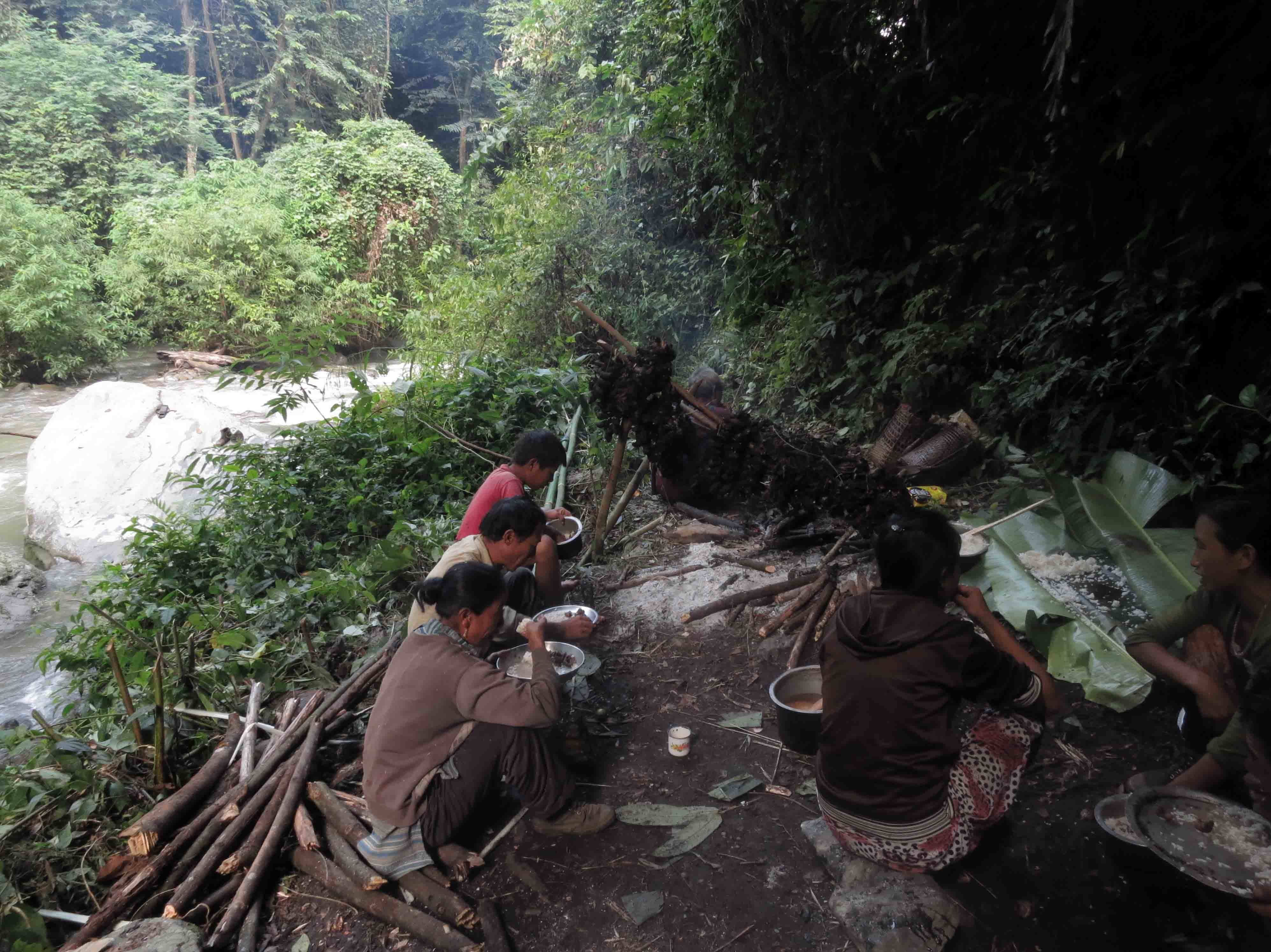I was in a remote part of Nagaland in 2013 and 2017 to shoot a documentary film on the Longpfuru community. One of the most interesting things about the Longpfru is the bat-hunting ritual in caves. They are part of the larger Yimchungru tribe, which is a “recognised” tribe.
The Longpfuru community has three main clans – Whourr, Merr and the Bomrr, and are settled in the Mimi village and some villages surrounding it (such as Khongka, Khongjiri, Mutenkhong, Lopfukhong and so on). The Longpfurus abandoned their older village where they has 600 households and later moved out to settle in smaller villages. Around 1955 some of them settled on the tip of a cliff, which is the Mimi village. Eight villages are in India and their 11 other villages are in Myanmar.

It’s a difficult drive from Dimapur, where I live. It takes about 12 hours through a difficult terrain, bad roads, undulating, mountainous tracks and of course forest areas, streams and cliffs. The Mimi village lies beyond the Saramati range bordering Myanmar. Mimi area is in Pungro sub division in Kiphire district in eastern part of Nagaland.
The Bomrr Lapkhun cave – which is locally known as the bat cave – belongs to the Bomrr clan – they have an annual bat hunting ritual in October where the only the Bommr clan participate. They climb the cliff to reach the caves with firewood, block all the openings and light a fire to smoke the bats. The bats either fall dead or try to fly out, and those that come out alive are killed with sticks. Then these are counted. When I had gone there to shoot the film, there were about 12,000 odd bats collected. Their oral history recalls the practice going on for seven generations – approximately 150 to 200 years.
The bats are cooked and eaten with rice. They are also smoked and kept aside for other purposes – for example, medicine, seasoning. I went with the clan to the bat harvesting site which was a steep trek from the village to the cave. We camped at the riverside and for dinner I was offered the bat meat and out of curiosity I had it. There’s some scare over fever caused from Nipah virus, which is said to be caused by fruit eating bats. I am not aware of the kind of bats there are in the Bomrr caves. This is an aspect known only by experts. I am no expert in this field. The Longpfurus told us that they have always eaten bats for centuries and never fallen ill. There was outbreak of an epidemic in 1980, but it was due to dysentery and fever and nothing to do with bat eating.

There was a team there from the National Centre for Biological Sciences (NCBS) doing a study on the bats in 2013. It was later found from their study (which they were doing along with National Institute of Mental Health and Neurosciences) that there were traces of rabies virus found among the bats. This study was published in Epidemiology & Infection on February 23, 2017.
However, there is no scientific evidence that connects the findings of the virus in the bats with infections of villagers located in the area. During the rites of passage, placing of a bat along with the human body is part and parcel of the Bomrr clan traditions.
There is the question of whether the bat hunting should be stopped, whether the close contact of wildlife carrying infectious diseases and humans should be put an end to. But this can only happen through education and awareness.
The subject of my documentary film on the Longpfuru community is not just about bat hunting. It is about how this Naga tribe is gradually adapting itself to a new lifestyle. There is need for better education and health facilities, at the same time these age-old practices continue.
Here is how the bats are caught:
Photographs and video courtesy: Kivini Shohe

